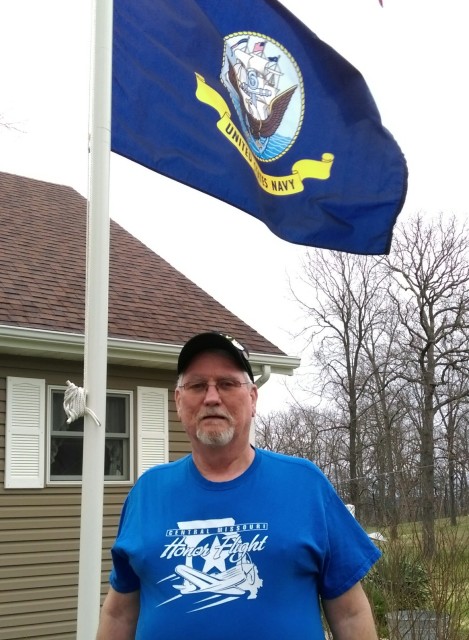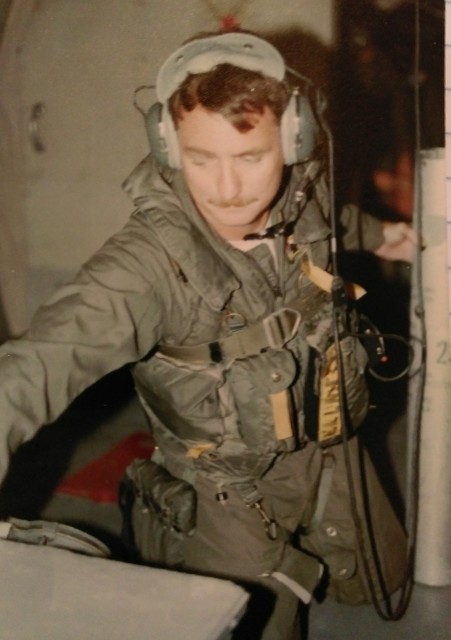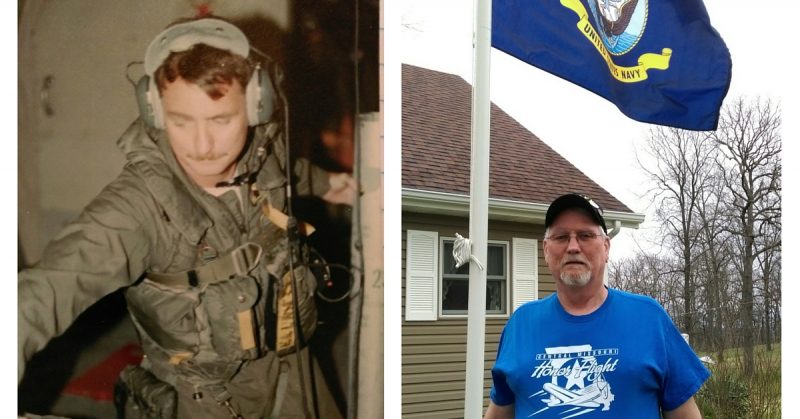By Jeremy P. Ämick, who writes on behalf of the Silver Star Families of America.
For 22 years, Gary Elliott wore the uniform of a United States sailor, making the trip “around the world 1-1/2 times.” When reflecting on his experiences in exotic and interesting locations, Elliott affirms that regardless the hardships of his naval past, it was an adventure that will never be forgotten and made possible with the support of his wife.
“I became a sailor in 1965 and I’m still a sailor to this day,” said Elliott, 69, Lohman, Mo. “It’s just a mindset that never leaves you.”
Enlisting in August 1965, Elliott dreamed about joining the Navy as early as eight years old; however, receipt of his notice to take his physical during the era of the Vietnam War draft motivated his decision to join of his own accord.
The young enlistee traveled to Great Lakes, Ill., in late August 1965, where he completed his basic training and was immediately assigned to the USS America—a supercarrier commissioned only months prior to his arrival.
“When I stepped aboard the ship at Pier 12 in Norfolk (Virginia),” Elliott explained, “it was the day that I turned 19 years old.”
Aboard the ship for its maiden voyage, the young sailor from rural Missouri received his first exposure to foreign lands, visiting countries such as France , Italy, Spain and Lebanon. However, Elliott said, since he was lacking in rank, he was relegated to duties that progressed from working as a mess cook to the maintenance and operation of large forklifts.

“I really just felt like I wasn’t getting anywhere,” he said.
Eventually, he was able to attend aviation ordnance school and traveled to Jacksonville, Fla., for a year of training. From there, he began a lengthy assignment in aviation when he was sent to Moffett Field, Calif., and attached to a P-3 Orion Squadron.
The Orion, Elliott said, was a Naval aircraft used to patrol the coasts for such clandestine threats as Soviet submarines.

“After I was at Moffett for a few months, I discovered that we would soon deploy and that sped up some of my plans,” he smiled.
This news, he explained, served as his inspiration to return to Missouri on September 10, 1967 and marry his fiancee, Carol Fischer, who would in later years accompany him on many of his duty assignments.
Throughout the next several years, Elliott’s duties primarily included service aboard an Orion airplane engaged in several six-month overseas deployments to locations such as Iwakuni, Japan, during which, he added, they would drop “sonobuoys”—an expendable sonar system—in the ocean to help detect the presence of submarines.
When his enlistment ended in 1970, the sailor made the decision to leave the service, but reenlisted in early 1972 after finding out that his wife was pregnant.
“I had been attending Lincoln University full-time on the GI Bill and didn’t have insurance (for his child’s birth),” Elliott said. “No insurance … no job—I just thought that it was time to go back in.”
Elliott completed maintenance training for the F-4J—a twin-engine jet fighter/bomber—followed by nearly ten months of service on the USS Saratoga, which deployed to the Gulf of Tonkin during the Vietnam War and served as a platform to launch aircraft for bombing missions. While aboard the ship, he learned that he had become father to his first and only child, a son named Michael.
The next few years were just as frenetic as the previous as he returned to flying with a Navy patrol squadron after attending training to became an anti-submarine warfare technician.
”This time I was not only loading and dropping the sonobuoys, but I was also analyzing the information they were transmitting,” he said.
He later deployed to the Naval Air Station at Keflavik, Iceland, spending two years helping to train the Icelandic Defense Force and assisting with the storage and maintenance of weapons. He then returned to a P-3 Orion Squadron and was assigned to Barber’s Point in Hawaii; however, after the Navy transitioned to a new patrol aircraft, he discovered his “ordnance” position had been phased out.
The final assignment of his career began in 1984 when he traveled to the Naval Air Station at Oceana, Va., where, for the next three years, he worked on weapons systems for various aircraft.
Following his retirement from the Navy in 1987, Elliott and his family returned to Lohman. He went on to earn his certification in HVAC and refrigeration and worked many years in the industry, retiring for good in 2010.
The former sailor has continued his legacy of public service with the church council at St. Paul’s Lutheran Church, as an alderman for the community of Lohman and by participating in many events to support veterans. Considering all of the moves and uncertainties associated with this military career, Elliott asserts it is the support of his family that has been the foundation of his career.
“I’m glad I got to see the things we got to see and visit the places that we did,” said his wife, Carol. “But I must admit, the deployments were very difficult … especially when they were back to back because it seemed like every time he was gone something happened—the car would break down, our child was born,” she smiled.
Despite any hardships, she concluded, it was an experience that helped to create many wonderful and enduring memories for the family.
“Whatever obstacles came our way, you just went through it because you had to,” Carol said. “I can say that it was all certainly worth it and that I am very proud of everything that my husband accomplished in his military career.”
By Jeremy P. Ämick
